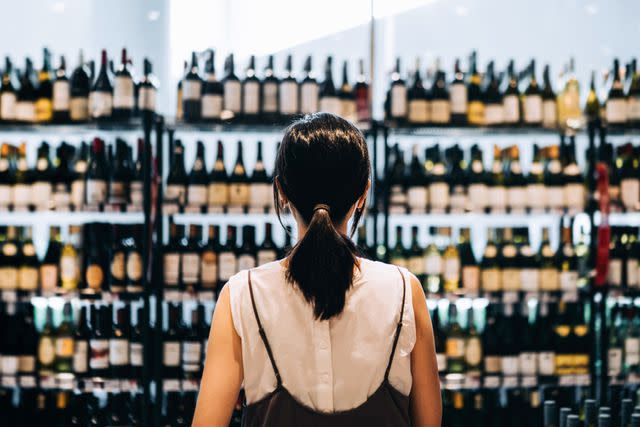You Can Buy Better Wine if You Know What to Look for on the Bottle Label
Decoding the label on that bottle of Barolo doesn't have to be as tricky as it seems.
Reading wine labels can be tricky. Some are more straightforward, while others have so much information on them that all but the most seasoned professionals or passionate collectors of that particular wine or region may find themselves perplexed as to what everything means.
With that in mind, we’ve put together a primer on how to decipher labels, no matter where in the world the wine comes from.

Yiu Yu Hoi / Getty Images
Related: Our Wine Editor Picks the Bottles for the Wine Bar of His Dreams
The vintage
The vintage on the label is always a reference to the year in which the grapes were picked. This is important because it allows us to understand what Mother Nature provided during that particular growing season (hot and dry vintages tend to be quite different from cool and wet ones, for example). The date is not the year the wine was bottled — given the differences in aging techniques and philosophies from one region or producer to another, there could be as much as several years between the harvest date and the bottling one…and even longer for some vintage Champagnes.
Geographical origin
In general, the more specific the geographical indication on the label, the better the wine will be. This is subjective, as are all matters of taste, but in general this holds true. So a wine labeled as simply coming from a country will not be as expressive or, in general, as interesting as a wine from a particular region within that country. Wines can get even more granular than that, with appellations, individual villages, single vineyards, or even single parcel wines.
Related: How to Build the Perfect Case of Wine, According to an Expert
Grape variety or blend
In the United States, Australia, New Zealand, Chile, Argentina, and other parts of the non-European world, wines are typically labeled by the grapes they’re composed of. But just because a wine is labeled as being crafted from a single variety doesn’t mean that it’s only that variety. In the United States, for example, a wine only has to be made of 75% of a particular grape variety to be labeled as such; many Napa Cabs, some of the best in the world, are actually blended with other complimentary varieties, like Merlot or Cabernet Franc. This isn’t a bad thing at all, as it allows the winemaker to craft the best possible wine in any given vintage.
Legally defined place names
When the name of a particular region or appellation appears on the label, it doesn’t just mean that the grapes were grown in that place; there are also often more regulations defining a specific region or appellation than simply lines on the map. Altitude can also be a defining characteristic of a particular place. For example, Napa Valley’s Atlas Peak AVA can only appear on a label if the grapes were grown between 400 and 2,600 feet above sea level.
Related: 40 Wines That Changed the Way We Drink
IGT, DOC, DOCG, AOC, AOP, and more
Fans of Italian and French wines will recognize these letters, which appear respectively on wines throughout both countries. They basically tell you that the wines come from controlled or protected place-names, and that they follow the specific rules and regulations that apply to the growing of grapes and making of wines in them, whether that’s how many vines per acre (or hectare) can be planted, permitted irrigation practices, the amount of time the wines spend in barrel or bottle prior to hitting the market, and more.
One important item of note: DOCG wines are not inherently better than DOC ones, though the label is generally considered to be more prestigious. Frescobaldi, the great Tuscan producer, puts it well on their website: “The tip of the pyramid is represented by DOCG wines, indeed the most prestigious acronym. Obtaining it requires adherence to even stricter criteria. It is, in fact, a natural step up from DOC wines, given that to become DOCG, the wine must have been DOC for at least ten years and be recognized as of particular value for its quality and as a historical production area.” Still, there are exceptions: In the early days of Super Tuscans, even the best of them were labeled as simply Vino da Tavola, since they didn’t follow any existing DOC or DOCG regulations. There are still bottles of old Sassicaia and Tignanello that are technically “table wine,” despite the fact that they’d cost serious money to acquire!
Old vines
There is no legal definition for old vines (or “vieilles vignes”), yet many labels boast of them. They do so because, in general, the older a vine is, the more expressive its grapes are. As vines get older, they begin to produce less — yet more concentrated — fruit. Many wines will specify on the back label how old the vines actually are in an old-vines bottling, and if that’s not the case, then check out the producer’s or importer’s website for that information. Old vines could be 30 years, 50 years, or even 100 years in some rare instances.
For more Food & Wine news, make sure to sign up for our newsletter!
Read the original article on Food & Wine.

